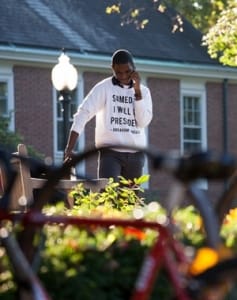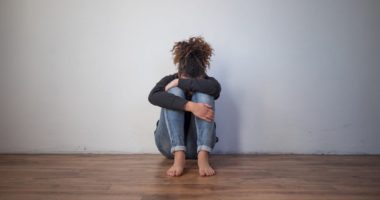Black Students (and Issues of Race and Perception) Matter
My nephew, a young black male who takes AP classes and is applying to college, has always had a hopeful and trusting attitude. But as he witnesses the senseless police killings of black males and the resulting non-indictments, his perspective has started to shift. He’s now more aware that to not be a statistic, he has to be twice as good, twice as smart, and 20 times more conscious of his actions. He knows how black men and boys are perceived is integral to their survival. And, he knows how black men are perceived doesn’t just matter in society at large — it also matters inside schools, where perceptions can limit opportunities and success.
In schools, bias against young black men shows itself in disproportionate discipline, but also seeps into classrooms in other pertinent ways. A new report by the Perception Institute attempts to explain how implicit bias, racial anxiety, and stereotype threat play out in schools and classrooms and offers insight into some of my nephew’s reactions. I share some takeaways from the research that, if applied, can help mitigate the weighty impact of recent events on young black males.
What this means for educators:
- It means acknowledging that perceptions about race are a part of education. As a microcosm of society, schools harbor the very same perceptions, biases, racial anxiety, and stereotypes about black people that exist in society. Making these notions explicit is an important first step.
- It means imagining in detail counter-stereotypic notions of black people to make positive exemplars salient and accessible. In classrooms, teachers can unknowingly express low expectations for black students because of their own exposure to negative stereotypes about these students’ academic capabilities. Promoting the stories of high-achieving black students, as documented in this study of 415 young men in New York, can create different images. Rather than stoking deficits and recording student failures as is often the case, talking about how young men of color can and do succeed in urban education contexts is a concrete second step.
- It means valuing the unique perspective of black students that involves “looking at one’s self through the eyes of others.” Stereotype threat, the fear of confirming a stereotype that one’s group is less able than other groups to perform a valued activity (e.g., math or verbal tests), has been identified as pervasive in academic environments. It can affect students as early as middle school and it negatively impacts school performance. Because of recent events, the duality of experience of many black students could become more salient. My nephew, like so many other black students, feels a resurgence of pressure to counter the perception of being another “black statistic,” despite personal identification as intelligent, socially responsible, and high-achieving. The negotiation of these two selves is difficult and different for each black student who navigates it. Asking students directly about their experience and respecting it as distinctive to an individual is another concrete strategy.
- It means recognizing that biases affect educators in complex ways. New research has found that teachers, too, can be affected by stereotype threat. Teachers who feared confirming a stereotype that they are racist provided black students with less critical feedback and more praise. This false praise leaves black students uninformed about the objective quality of their work and deprived of the necessary tools to learn and improve. Another concrete step to mitigate these negative effects is to train teachers on how to provide comments and criticism. For example, researchers suggest using statements like “I am giving you feedback because I have high standards, and I know you can meet them,” making clear the feedback’s purpose, while also promoting high expectations.
Our society is continuing to struggle with racial issues and equity as current events document, but educators and schools have the opportunity to tackle these issues and be a mechanism for change. The steps and actions noted above are a few examples, but the researchers at the Perception Institute have identified additional interventions that have proven to help eliminate racial biases as an obstacle to educational success. Educators can lead the way in creating positive cultural messages and diminishing stereotypes by positively shaping the school context and messaging about black students. But the question remains: Will educators and other stakeholders embrace the opportunity to create conditions and ideals that promote racial equality, or will they perpetuate bias instead?










